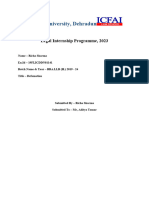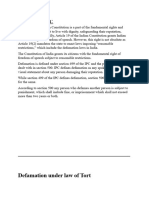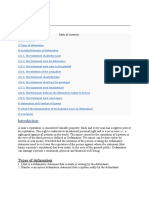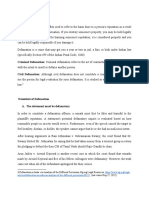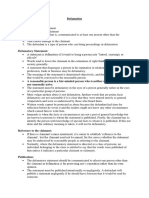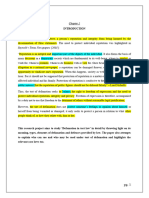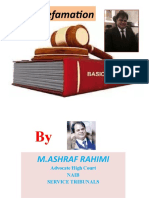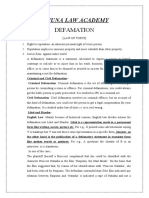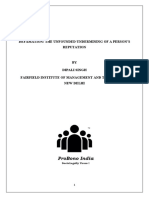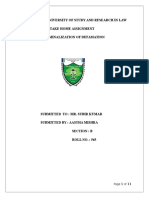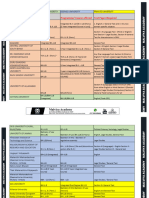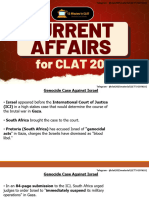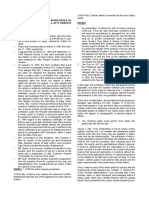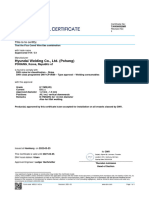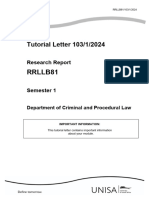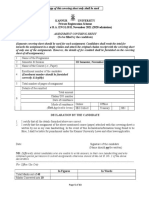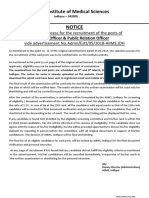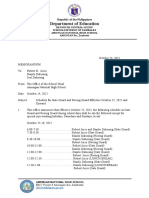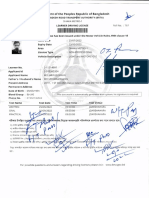0% found this document useful (0 votes)
23 views35 pagesTort Class 6 (Let's Go Nlu)
The document discusses defamation, including the legal definition and categories of defamation. It outlines the key requirements for a statement to be considered defamatory and the essential elements of a defamation claim. Some defenses to defamation are also mentioned.
Uploaded by
ks0090824Copyright
© © All Rights Reserved
We take content rights seriously. If you suspect this is your content, claim it here.
Available Formats
Download as PDF, TXT or read online on Scribd
0% found this document useful (0 votes)
23 views35 pagesTort Class 6 (Let's Go Nlu)
The document discusses defamation, including the legal definition and categories of defamation. It outlines the key requirements for a statement to be considered defamatory and the essential elements of a defamation claim. Some defenses to defamation are also mentioned.
Uploaded by
ks0090824Copyright
© © All Rights Reserved
We take content rights seriously. If you suspect this is your content, claim it here.
Available Formats
Download as PDF, TXT or read online on Scribd
/ 35
